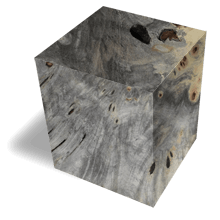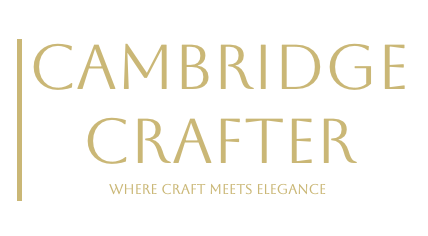
Buckeye Burl
Buckeye Burl comes from the Aesculus genus, primarily the California Buckeye (Aesculus californica), a deciduous shrub or small tree native to the western United States, particularly California and southwestern Oregon. It grows in the foothills of California’s Central Valley, between 1,200 and 4,000 feet elevation, often reaching 13–39 feet tall with a broad crown. The burl forms as an irregular growth, with 90% or more developing underground at the base of the tree (root wad), making harvesting challenging due to obstacles like rocks, sand, dirt, bullets, and even rattlesnakes in the voids.
The heartwood of Buckeye Burl is visually striking, with a colour palette ranging from creamy white or golden yellow to blue-black, often featuring greyish, purple, or amber streaks due to spalting or mineral staining. Some pieces may even show hints of red. The grain is fine and even, typically straight but with dramatic swirls, knots, and burl eyes that create intricate, almost tie-dye-like patterns. The texture is smooth, with a moderate natural lustre that enhances its visual appeal when finished.
Buckeye Burl has a density of around 400–500 kg/m³, making it a relatively soft and lightweight hardwood—softer than many softwoods like pine. Its low density can lead to fuzzy surfaces when worked, similar to aspen, and it’s prone to cracking and distortion during drying, often resulting in 60–75% waste during milling. For this reason, many pieces are stabilised with resin under high pressure to improve durability, especially for applications like knife handles or pen blanks. It has poor decay resistance, rated as non-durable to perishable, and is not suitable for food-contact surfaces due to toxicity concerns (the tree contains a neurotoxin, aesculin, in its seeds, leaves, and sawdust).
When worked, Buckeye Burl has a mild, unpleasant scent when green, which subsides upon drying. It’s generally easy to work with, gluing and finishing well, though its softness requires stabilisation for high-wear items. It’s widely used for decorative veneer, electric guitar tops, small turned objects (e.g., pens, bowls), and knife handles, prized for its unique patterns and colours. In the UK, it might be used for bespoke furniture inlays or artistic sculptures, where its natural voids and live edges can be highlighted with epoxy resin.
Buckeye Burl is moderately priced but can be expensive to mill due to labour and waste. It’s not listed on CITES or the IUCN Red List, but its harvesting can impact local ecosystems, as the tree provides habitat for wildlife. The wood’s striking appearance and rustic charm make it a favourite for projects where natural beauty and individuality are paramount.
